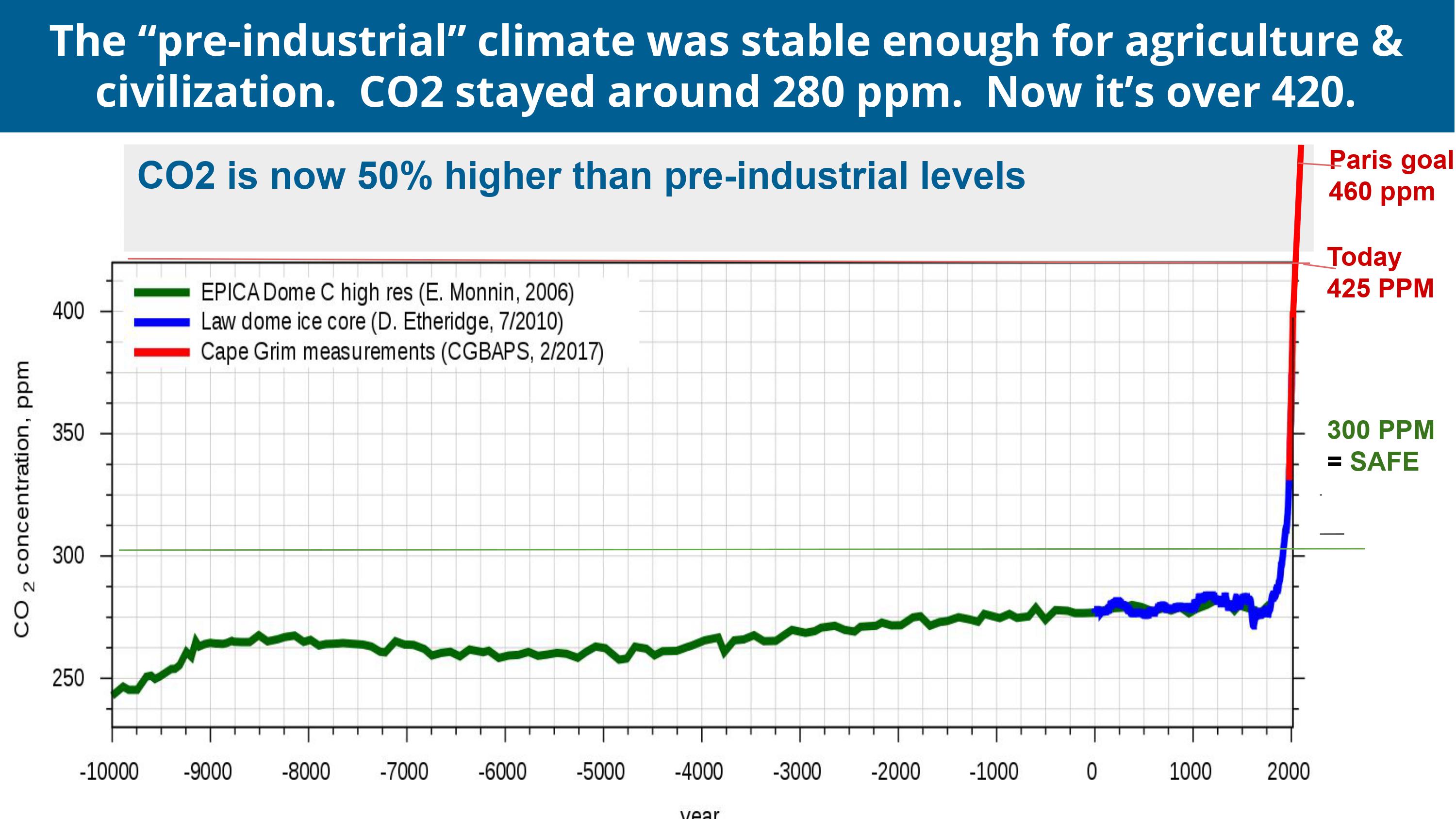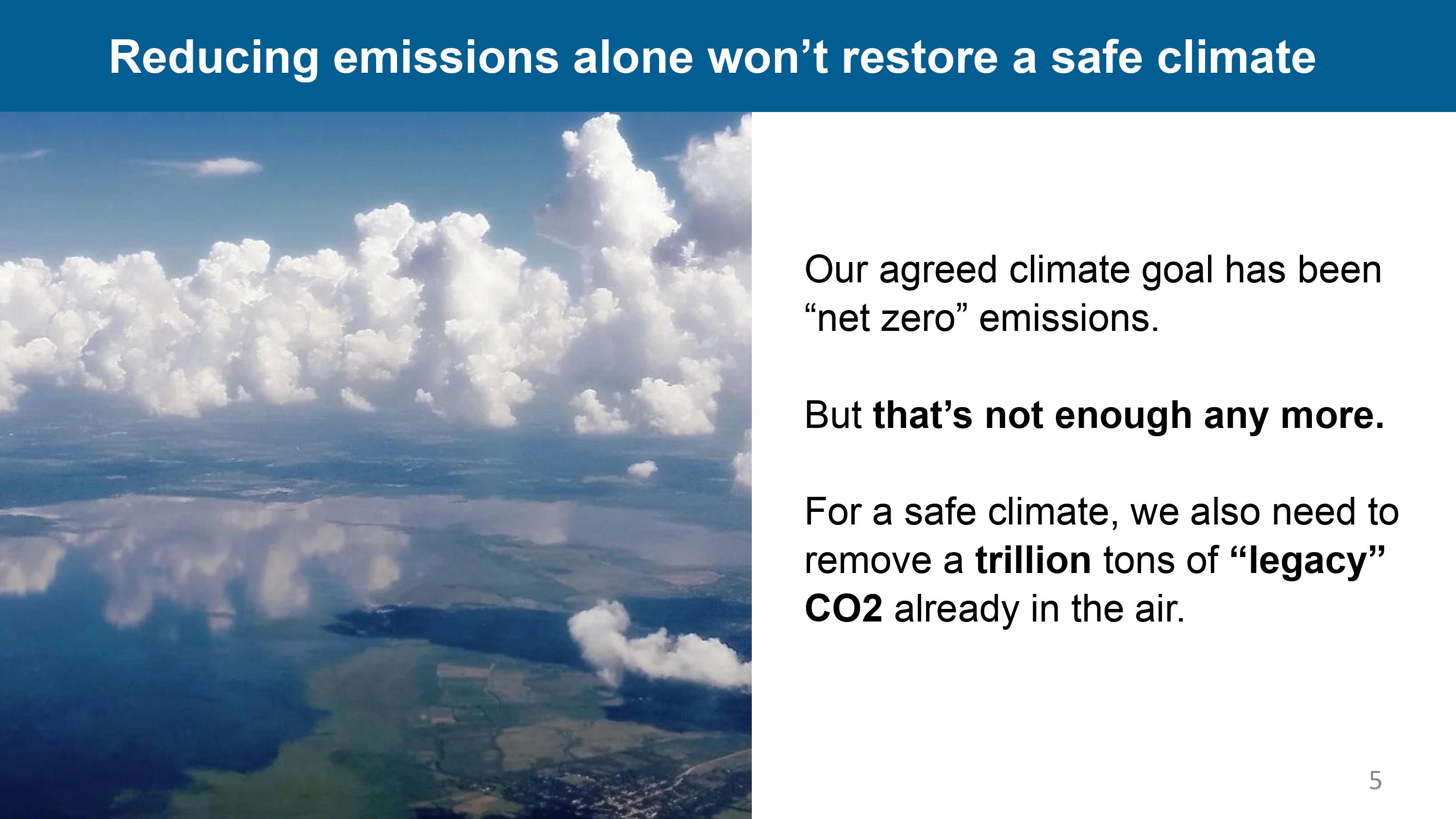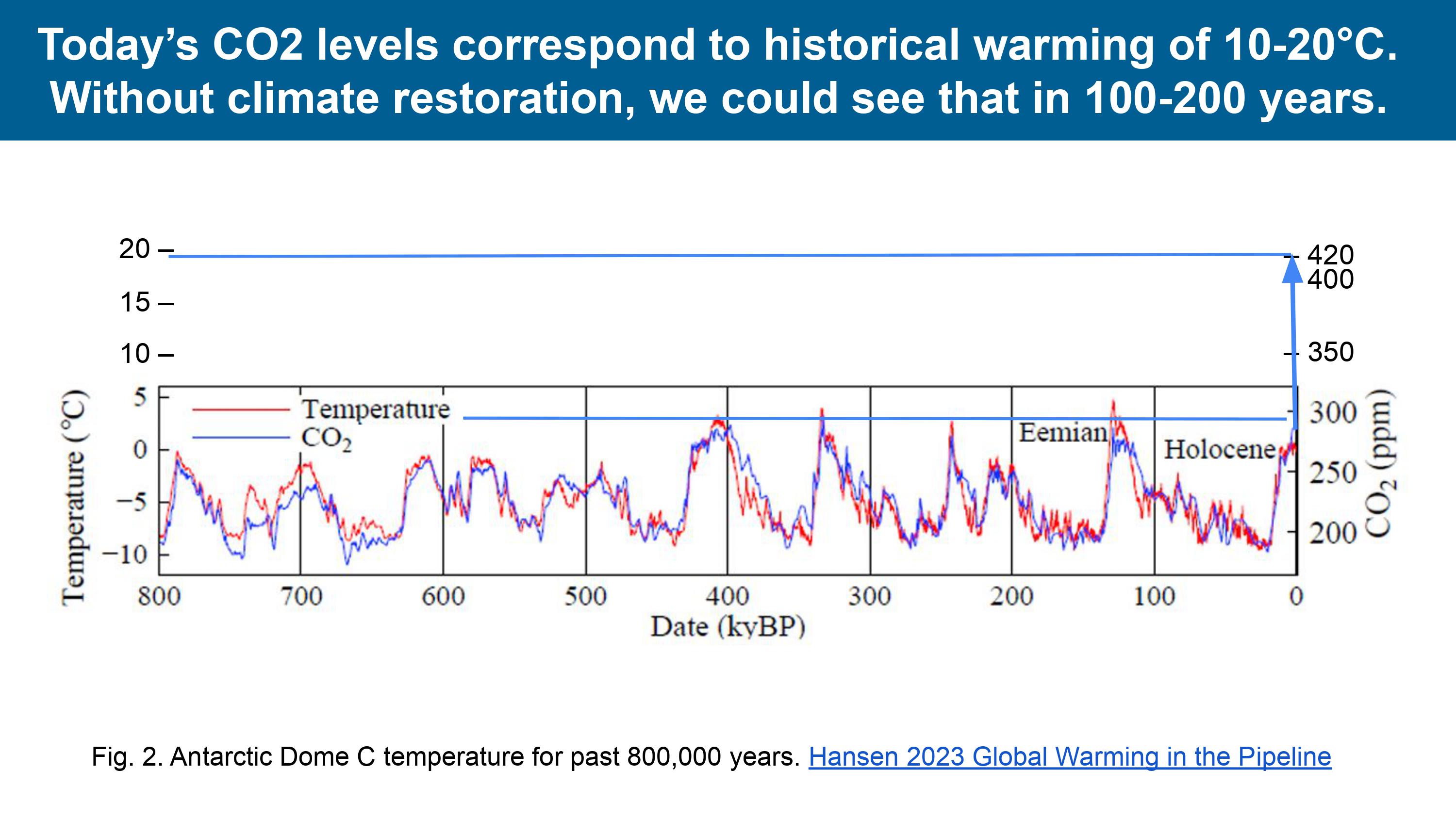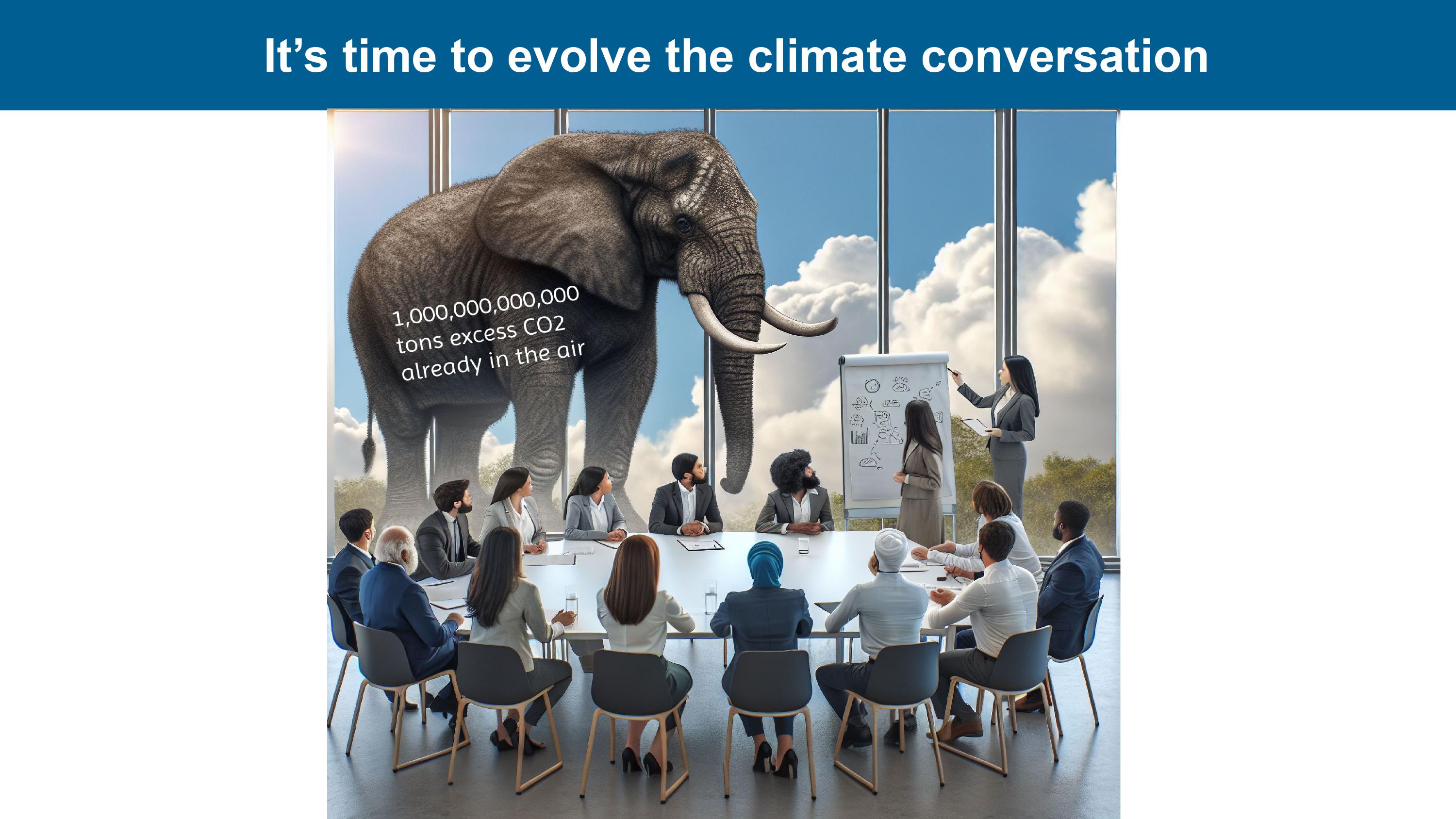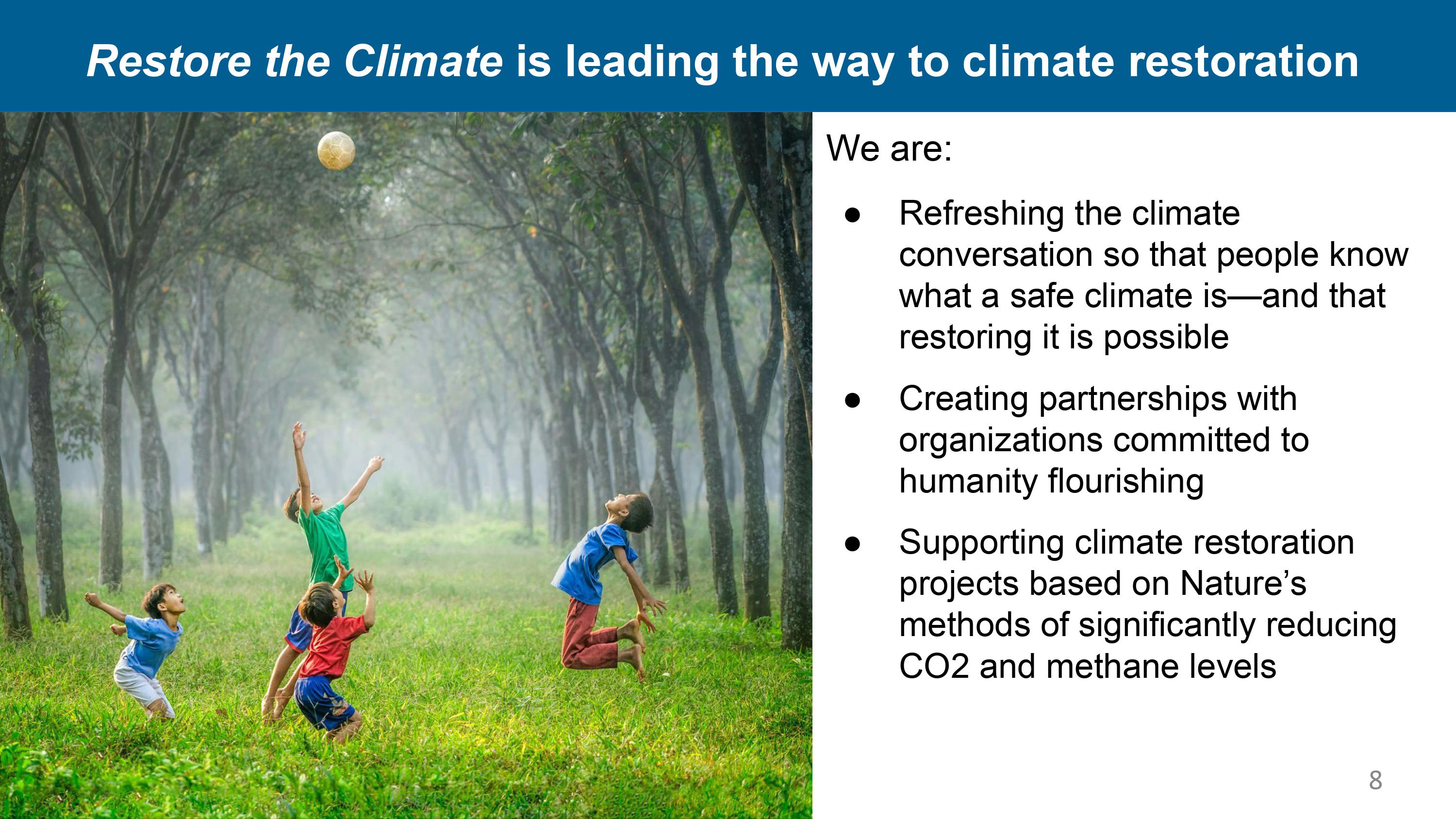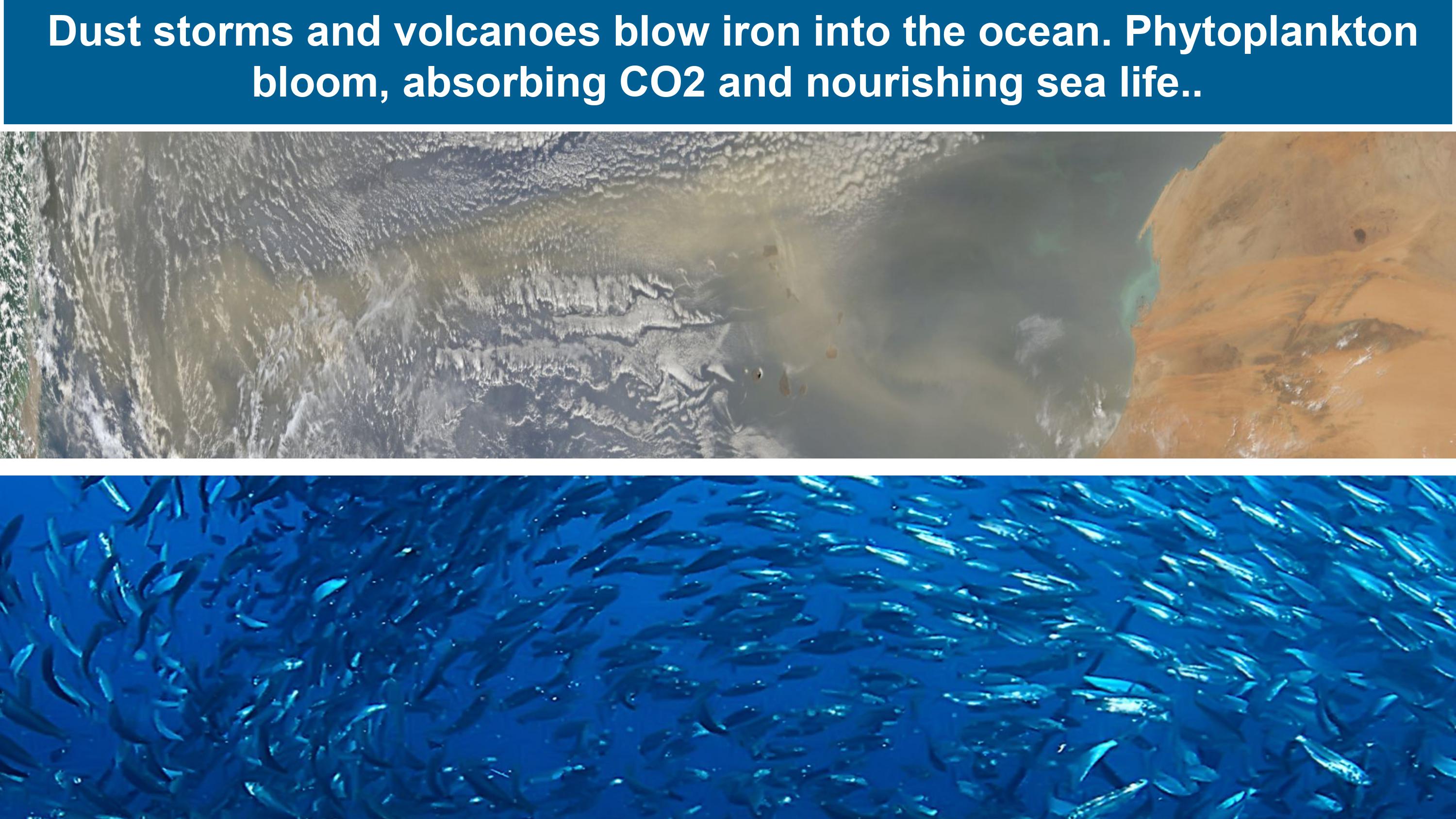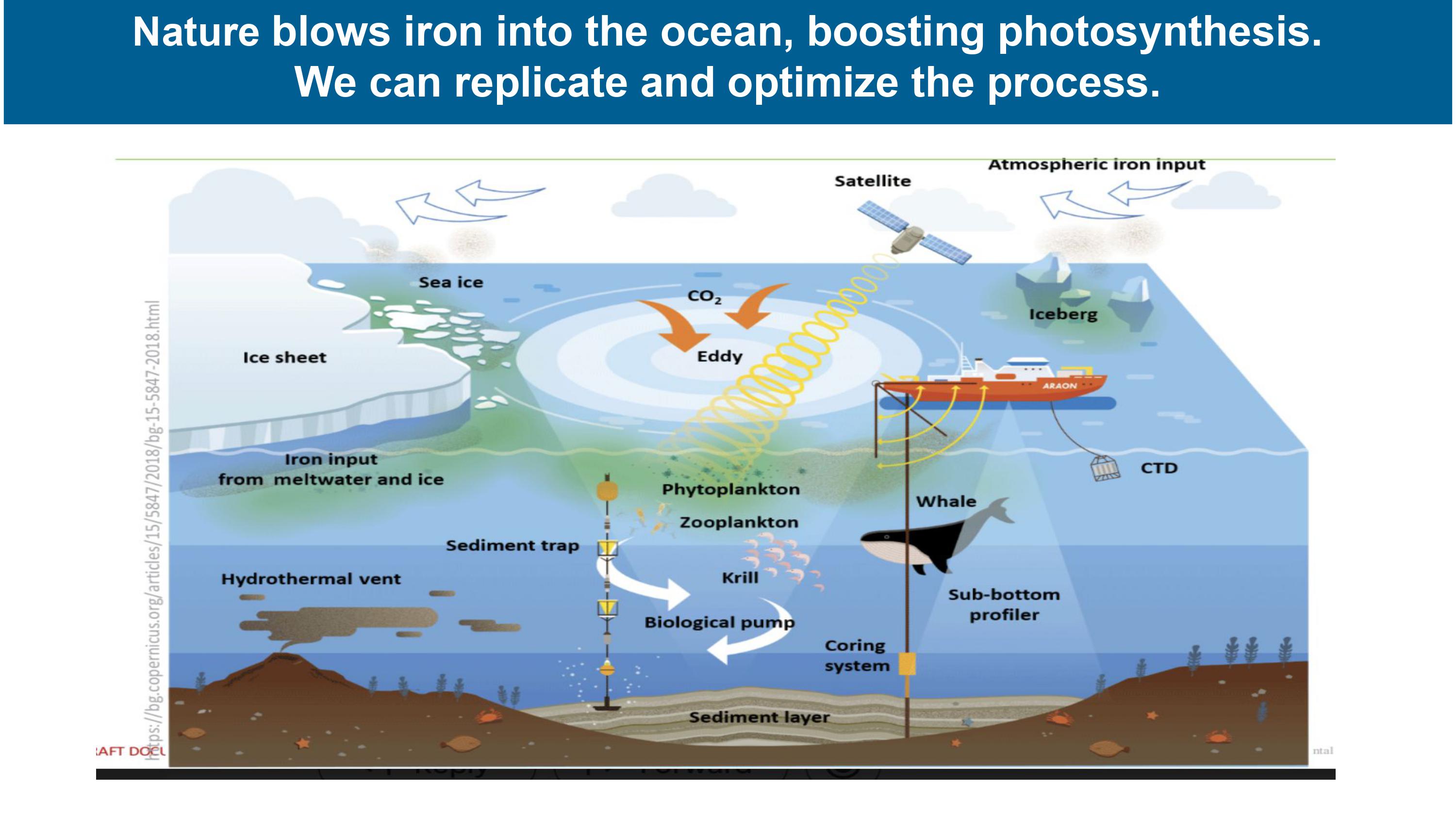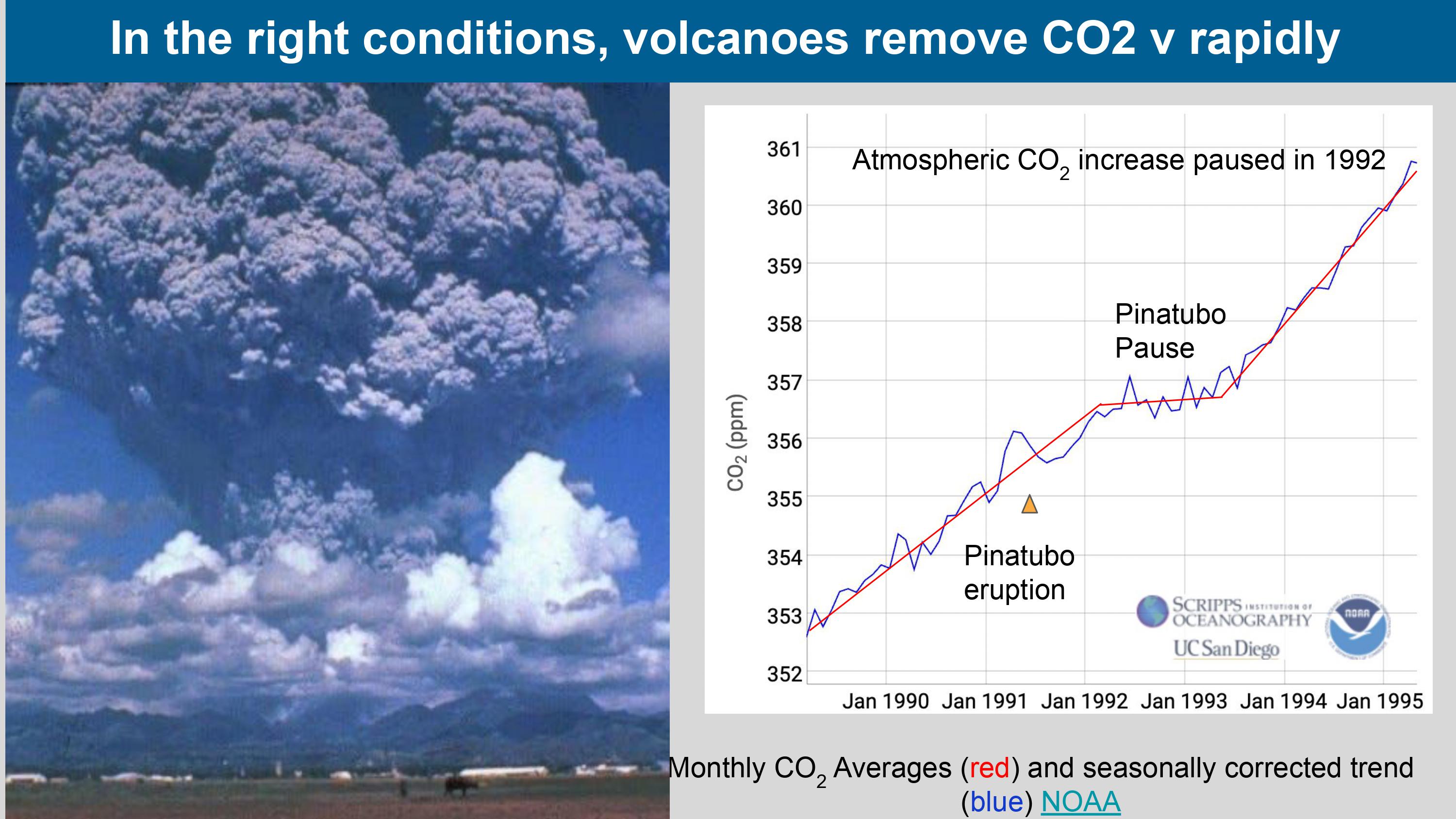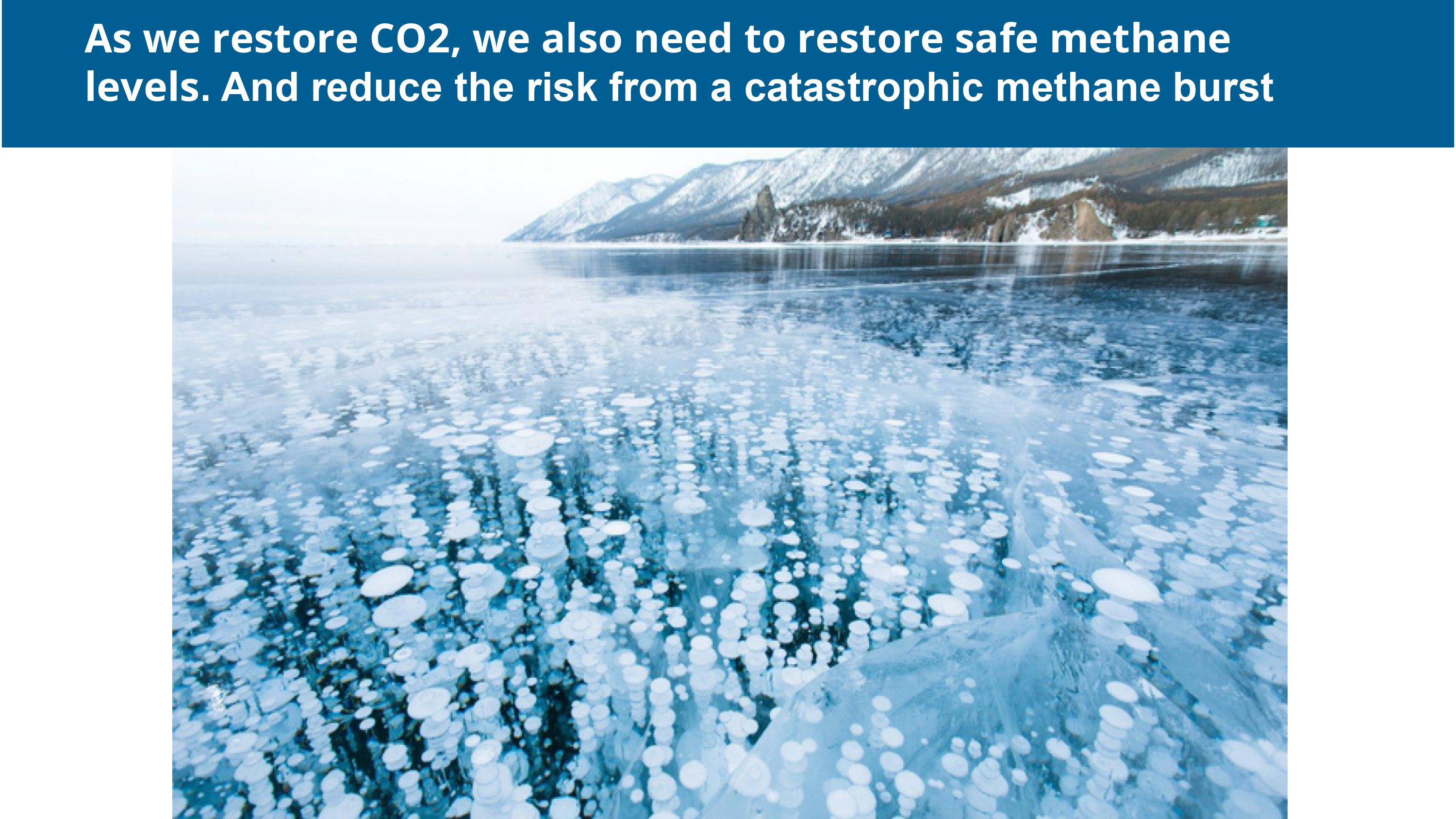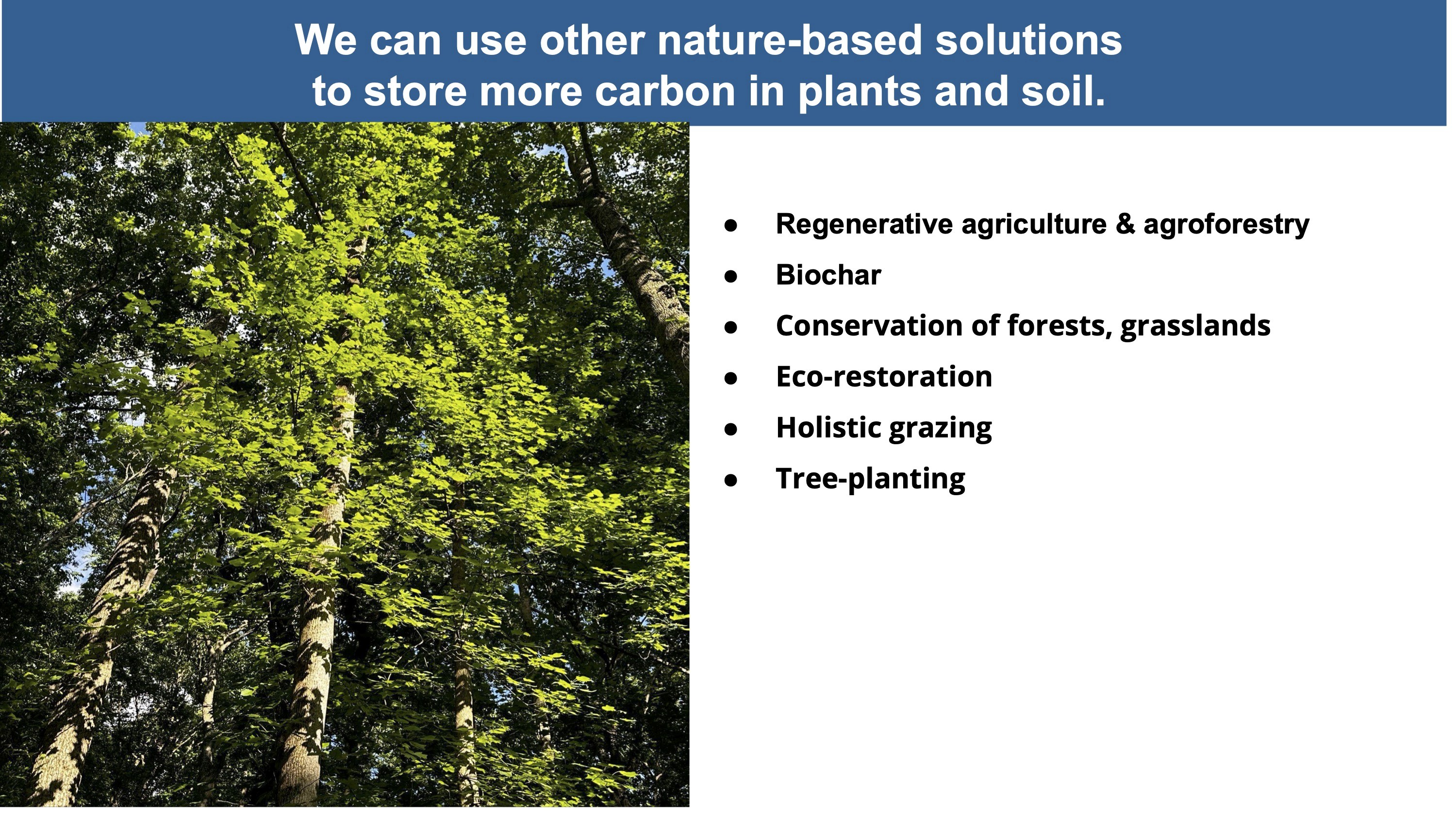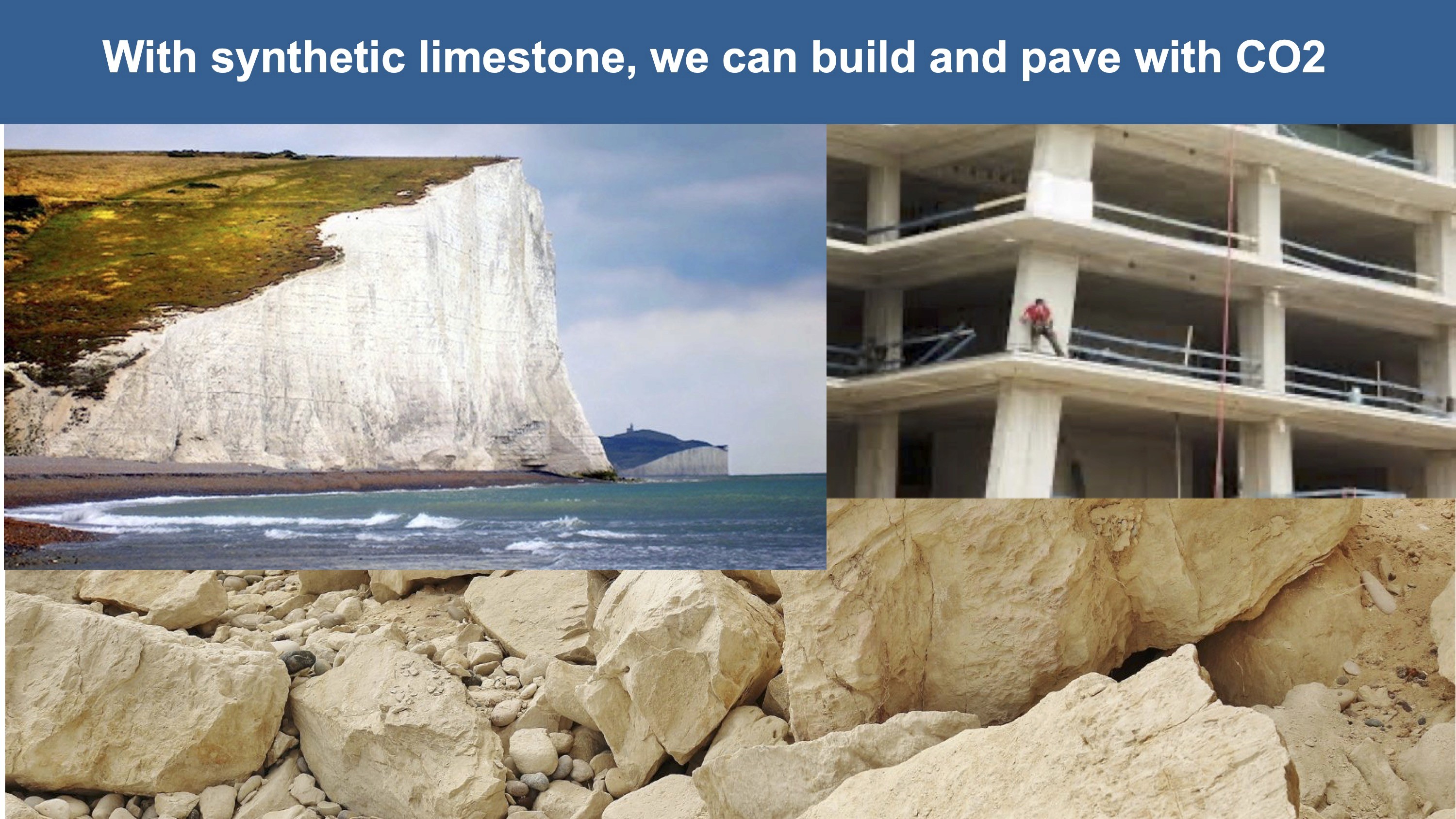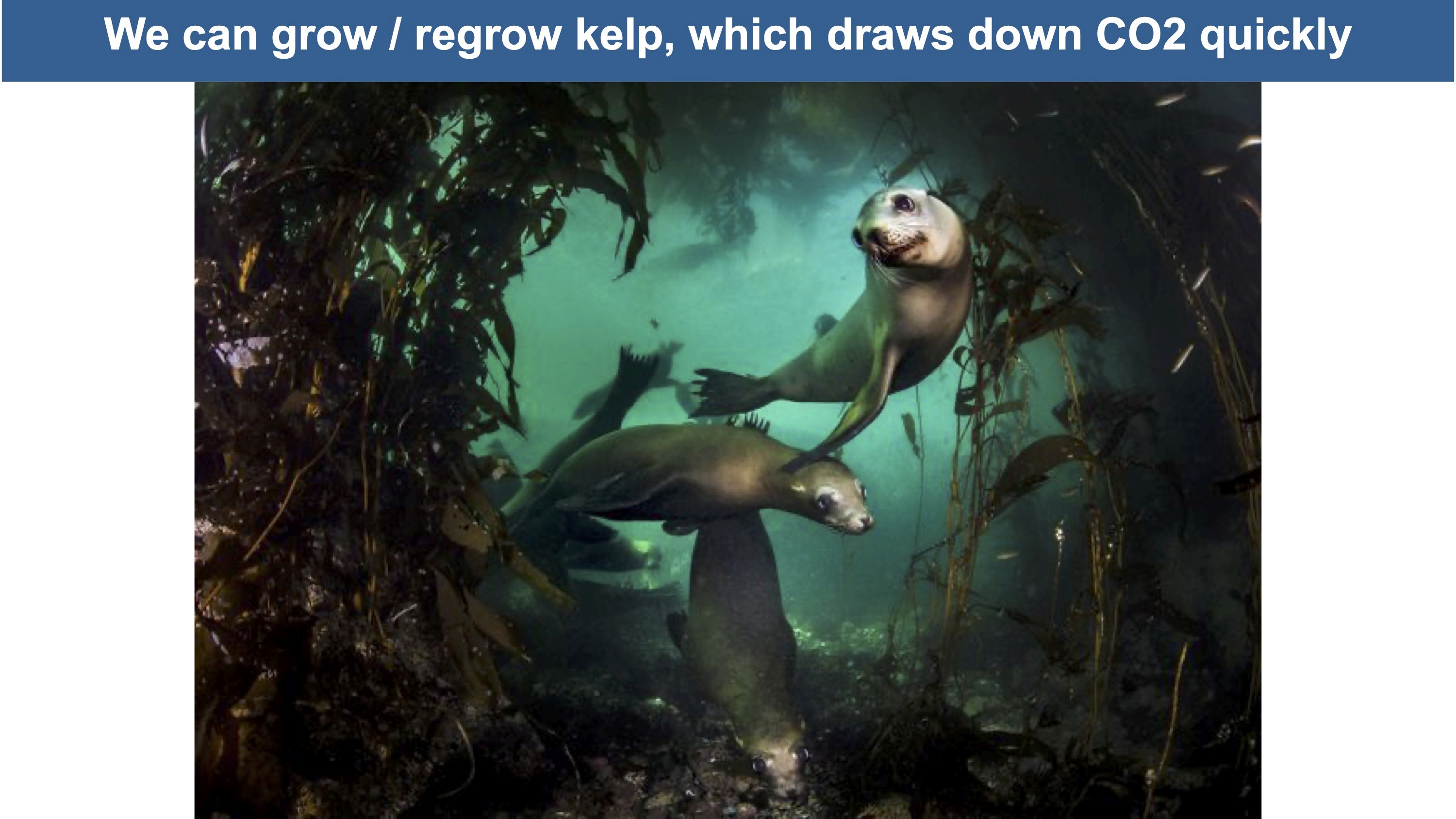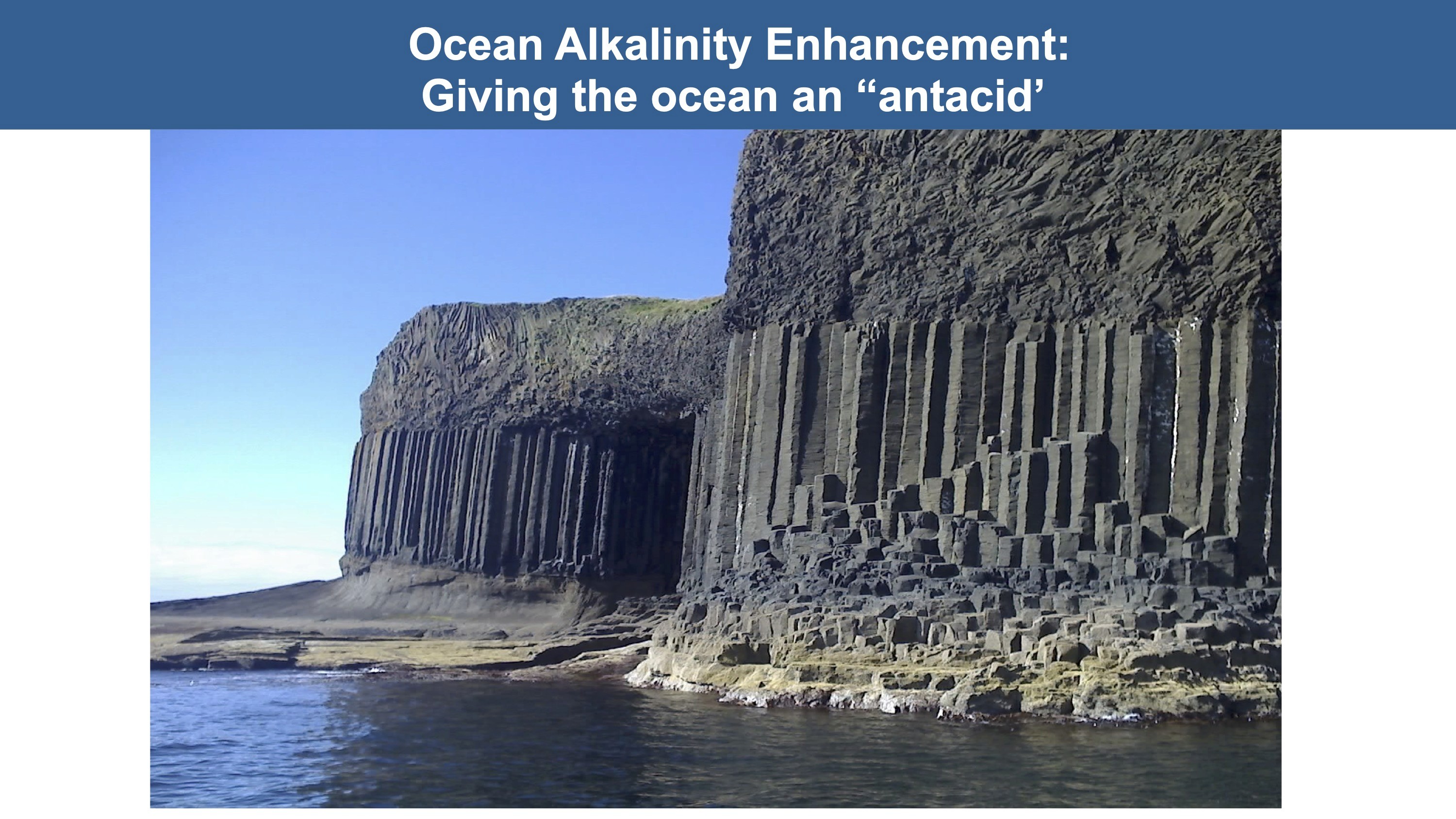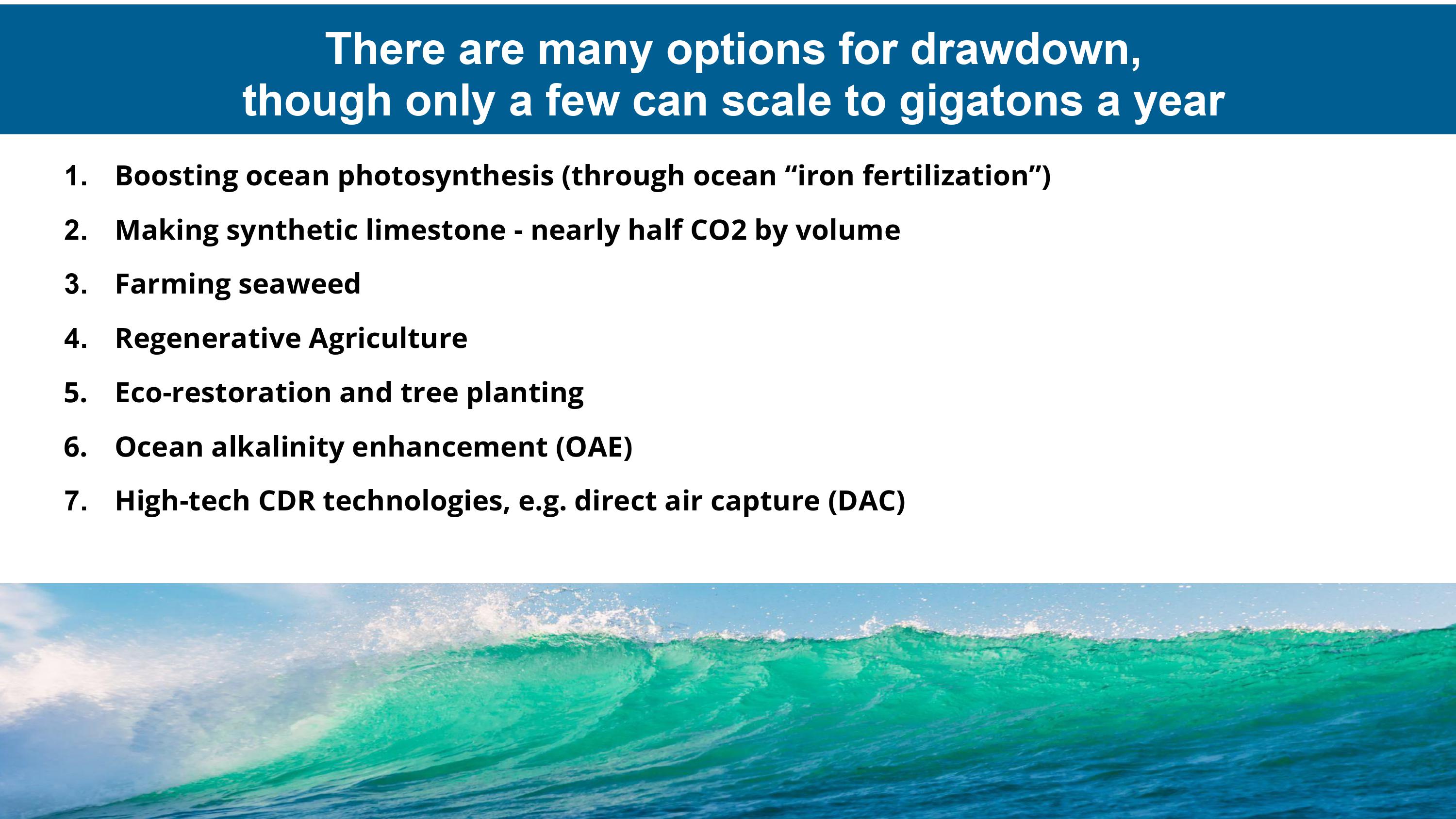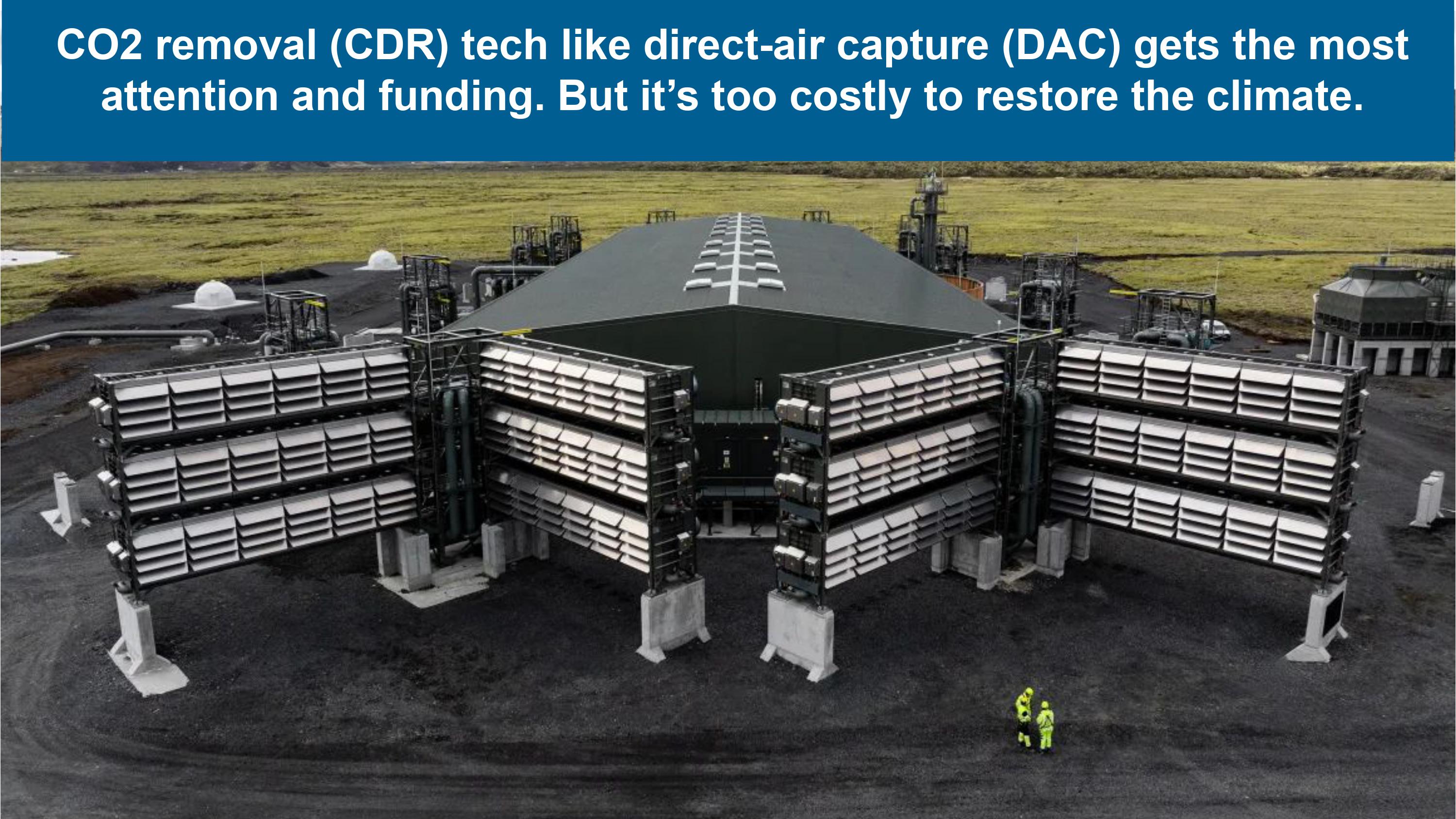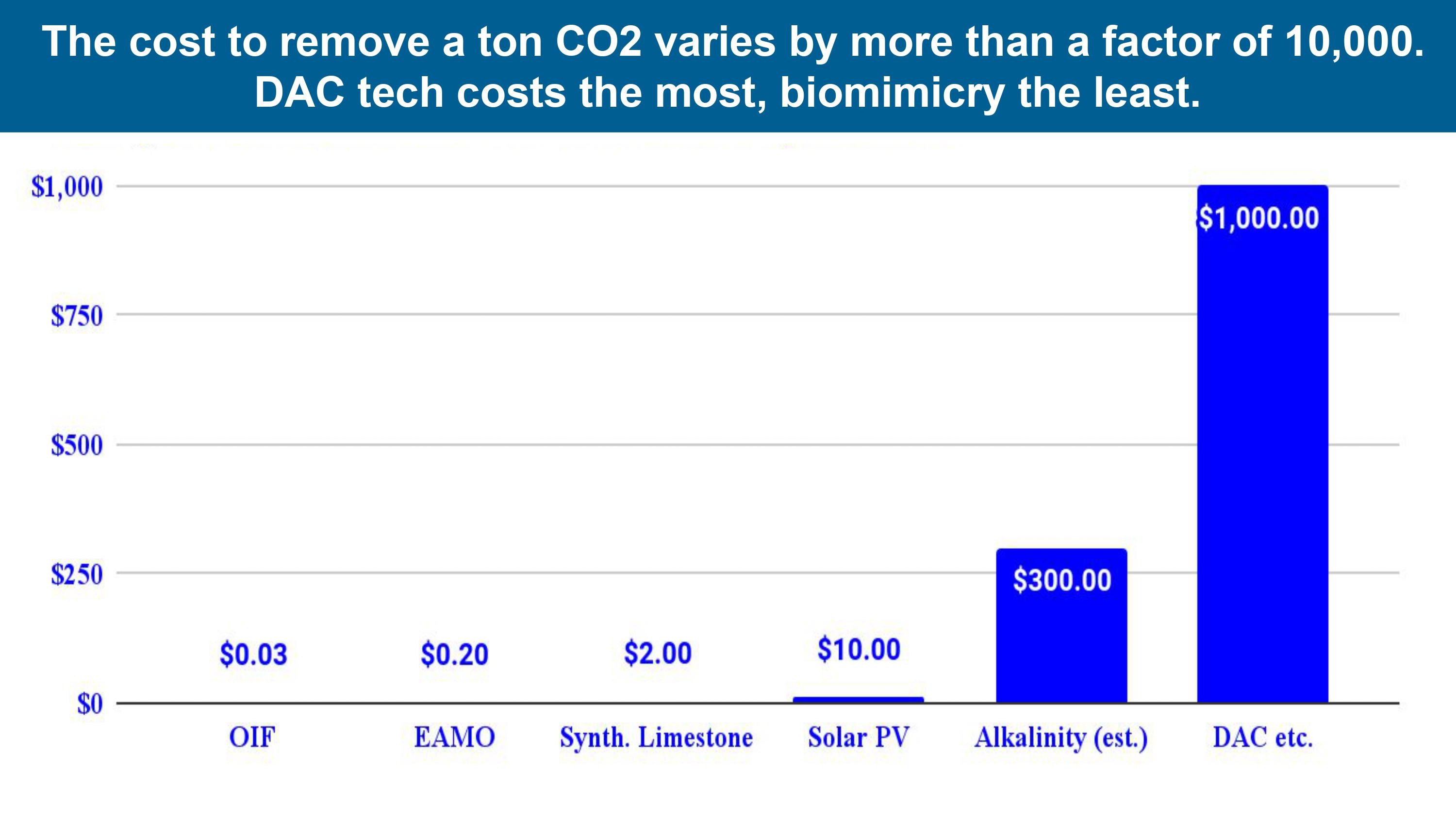Climate Restoration Basics
Restoring a safe climate requires more than reducing emissions to net zero. Here’s the thinking behind climate restoration:
1) We have an obligation to give our children and future generations a safe climate, just as we and our elders were given.
2) While many people assume that reducing emissions will restore a safe climate…it won’t. Reducing emissions just limits the RISE in CO2 levels. But already, the backlog of CO2 from the last 150 years is enormous. We also need to draw that down.
3) Science shows us that Nature pulls down enormous amounts of CO2 regularly… so it makes sense to look to her first for how to do it safely, effectively, and on a sufficiently large scale.
4) We are working to replicate and optimize natural methods of CO2 removal. These “biomimicry” solutions also look surprisingly cost effective. Government funding, while welcome, would likely not be necessary.
A safe climate…what IS that? One that humans have actually survived long term.
It’s the “pre-industrial” climate we had for about 10,000 years, from the end of the last ice age until CO2 levels started to rise rapidly about a century ago. The stability of the pre-industrial climate allowed us to develop agriculture and civilization.
In technical terms, the pre-industrial climate had CO2 levels below 300 parts per million (ppm).
(That means that out of every million air molecules, less than 300 were CO2.)
We exceeded 300 parts per million about 100 years ago, from burning fossil fuel for vehicles and industry.
Today CO2 has reached 425 ppm. Under the UN Paris agreement goal of “net zero” by 2050, it would rise to 460 ppm. Unless we intentionally pull it down.
In short, we want to turn the “hockey stick” into a “blip”. That’s what climate restoration is all about—so that future generations have a bright future.
(Graph from NASA, frequently used in climate science)
We saw that for the last 10,000 years, we lived in a world with about 280 ppm CO2.
Let’s take a longer view: This NASA graph shows CO2 levels going up and down with the ice age cycle, for 800,000 years.
As you can see, CO2 levels rarely rose above 280 ppm for all that time. We know that from samples of ancient air trapped in ice drilled deep into the Antarctic ice cap.
Modern humans evolved about 300,000 years ago…we’re literally designed for an environment with CO2 well under 300 ppm.
That’s why we know that under 300 ppm is safe.
Today’s agreed climate goal is to achieve net-zero emissions by 2050, largely by moving to clean energy.
(Net-zero means that we’d use CO2 removal to balance out whatever emissions continue.)
These days we’re making tremendous progress in the transition to clean energy. Solar capacity is doubling every 2-3 years; batteries every year. It’s great news. Yet it’s coming decades too late.
If we’d shifted to renewables back in the 1980s, we’d probably be fine. But as you know, we’ve kept burning fossil fuels—and also billions more people around the world came into the middle class. So emissions have kept rising.
The result: by now there’s a backlog of a trillion tons of “excess” CO2 already in the atmosphere.
So now we not only need to retool the economy with clean energy…we also need to remove the “legacy CO2” that’s accumulated in the atmosphere since the industrial revolution. It’s the enormous backlog of legacy CO2 that’s causing most of the climate chaos.
If we don’t intentionally restore CO2 levels, they are projected to soar more than 50 percent higher than humans or even hominids ever experienced on a sustained basis.
Translating from parts per million to projected temperatures:
Senior climate scientist James Hansen recently published this data on CO2 and temperature, also from the last 800,000 years. It shows that, historically, today’s CO2 levels correlate with a temperature rise of 10-20° C over pre-industrial. There’s a time lag, which could be 100 or 200 years… but this is not good news.
Remember that the IPCC, and therefore the world climate community, is committed to keeping temperature rise “well under 2” and “preferably 1.5°” over pre-industrial. Well already, today, we’re at 1.5.
Note: The UN climate goals are stated in temperature rather than in greenhouse gas parts per million. For climate restoration, we use parts per million instead because, as seen above, there’s an uncertain time lag between levels and temperature. Setting goals in terms of CO2 parts per million is therefore more measurable and more precise. In addition, we can control CO2 directly.
For a safe climate, the goal is CO2 is historically safe levels—below 300 ppm—by 2050.
This trillion tons of legacy CO2 is now the proverbial elephant in the room. Some scientists and activists are well aware, but few talk about it in public.
Our official climate goals fail to address the elephant. They only call for not adding MORE emissions.
Yes of course we need to shift away from fossil-fuel use, if for environmental and health reasons alone.
Pollution from fossils kills more people every year than have died from COVID over the last five.
We ALSO need to pull out the legacy CO2 to restore a climate safe for humans and other living things.
The goal of net-zero was debated and set in the 1980s, and agreed by the UN back in 1992. At the time it was called “stabilizing” greenhouse gases. Back then, climate change wasn’t obvious yet—so it seemed reasonable that if we reduced emissions by moving to clean energy, our climate would stay safe. It didn’t happen, so today we need to remove the huge backlog.
It’s time to evolve the climate conversation.
Because no national agency or international body currently has a mandate to restore a safe climate for future generations, we created Restore the Climate (RTC). RTC is dedicated specifically to leaving our children a safe climate like the one we had, and our elders before us.
Our Mission is to:
Generate demand for a historically safe climate
Develop the partnerships, data, and policy for climate restoration solutions to scale by 2030
Restore safe CO2 and methane levels by 2050.
Sucking a trillion tons (1,000 billion tons, or gigatons) of excess CO2 out of the sky may sound overwhelming.
Why do we say we can do it? Because Nature has done it many times.
Here you see the CO2 levels rising and falling over the last 800,000 years. Every time CO2 goes up, Nature pulls it back down—this is the ice age cycle.
Scientists only discovered how the process works about 30 years ago. Shortly after, they set about replicating, and speeding up, the process. (And no, no one wants to create another ice age—just to achieve safe, pre-industrial levels.)
Mother Earth has developed other processes that scientists have replicated, which can also help restore a safe climate.
Above: dust from the Sahara blows west across the Atlantic. Below: Phytoplankton form the base of the food web, so it restores fisheries.
Nature increases dust storms as continents dry out, leading up to an ice age. The storms blow more iron dust from drylands out to sea. Iron is the limiting factor for the growth of marine vegetation in much of the ocean. It’s necessary for all life, but unlike other nutrients (nitrate, phosphate) iron sinks.
Much of the ocean is therefore anemic. A trace amount of natural iron fertilizer can prompt immediate, healthy blooms of phytoplankton. Phytoplankton are the tiny green plants and algae that make up the base of the marine food web.
Phytoplankton absorbs huge amounts of CO2 through photosynthesis. When the phytoplankton (and whatever eats it) dies, it sinks, dragging the carbon down. Unlike trees, it can’t burn and doesn’t rot, since there’s not a lot of oxygen deep in the ocean.
We call this process natural process “ocean iron fertilization” (OIF).
Based on the science of ice ages, replicating natural OIF is the most promising pathway to a safe climate. The results of over a dozen field expeditions (from 1992 to 2012) are mixed but indicate that when done at the right place and time, intentional OIF can draw down large amounts of CO2. The goal is to scale to removing 60 Gt / year from 2030 to 2050.
Minute amounts of iron dust do the trick: about 1/100 teaspoon-about the size of a grain of salt—per square meter each year. We project that treating less than 1 percent of the ocean surface would suffice.
The dust can be distributed from a ship in ocean eddies, about 100 km in diameter; eddies can contain the iron for several months before it disperses. The fertilized area turns green in a day, fish collect at the feast in a week, and whales and seabirds move in within a month.
Hearing about OIF and phytoplankton, you might worry about harmful algal blooms (HAB).
There is virtually no danger of this with intentional OIF. Harmful algal blooms occur when there are too many nutrients—typically close to shore, where fertilizer and manure run into the water. Intentional OIF by definition would be implemented in the deep ocean where iron is extremely limited or altogether absent.
Cost: Extremely low. 1 - 3 cents to pull down a ton of CO2. Less than 1/10,000th the cost of “technological” CO2 removal like Direct Air Capture.
The 1991 eruption of Mt Pinatubo created global dimming and cooled the Earth temporarily. That’s well known.
What's less known is that for 14 months following the eruption, the world also experienced net-zero emissions, as can be seen in the Keeling curve. In other words, CO2 didn't rise for over a year --even though humanity emitted some 20 Gt into the atmosphere. About 20 Gt of CO2 “disappeared.”
We call this unique period of net-zero—engineered by nature— the Pinatubo Pause.
After analyzing five hypotheses, we’ve found that the most likely cause is natural ocean iron fertilization from volcanic dust falling into the nearby South China Sea.
We need to urgently replicate the process Nature used to accomplish this rapid, large-scale CO2 removal.
We’re putting together a project with the Philippines Coast Guard to do just that. Within a few years, we expect to get results at least as remarkable as Nature’s.
This photo shows methane, trapped for thousands of years in permafrost beneath Arctic waters, bubbling up to the surface as the permafrost melts. Methane is close to 100 times more powerful a greenhouse gas than CO2. It has a short lifetime in the atmosphere, though, because nature removes it continuously.
Methane is the next most important greenhouse gas after CO2: it accounts for about 20 percent of global warming. There’s also a danger that methane leaks like those in the photo might become a “methane burst”--a catastrophic amount of methane released in a very short period of time. The last time this happened, temperatures rose so high, so rapidly, that about 30 percent of life on Earth went extinct.
Climate restoration requires us to cut methane levels in half to get them back to pre-industrial. We also need to be ready to radically scale up methane removal in case a major burst begins.
Nature oxidizes methane continuously through simple chemical processes in sunlight. The oxidation turns CH4- methane— into H20 plus CO2— water and carbon dioxide. (Yes, CO2—but remember that’s far less potent.) By replicating a natural pathway, we project that we could double the background rate of methane removal…and cut methane levels in half by 2030.
We call this Enhanced Atmospheric Methane Oxidation (EAMO).
Yes, the world agreed to reduce methane emissions at the last big climate conference. But just as with CO2, we need to remove the excess methane that’s already there—as well as guard against a possible future burst.
Projected cost: Low. About 20 cents to remove a ton of CO2-equivalent.
https://www.earth.com/news/subsea-permafrost-could-unleash-catastrophic-co2-emissions/
https://www.newsweek.com/methane-boiling-sea-discovered-siberia-1463766#slideshow/1534027
All of these are good for soil, wildlife, and human health—and there’s good reason to do them all.
All contribute to restoring a safe climate
Some can make money in the offset market, particularly in countries in the South.
Land-based efforts by themselves are not enough to restore the climate though. Three main reasons:
First, they take widespread behavior change. E.g. Regenerative agriculture is a terrific idea: it reduces the need for fertilizer, pesticides and recreates healthy soils and builds up soil carbon.
But to sequester significant amounts of carbon would require billions of farmers around the world to adopt new practices. The climate can’t wait that long.
Second is space constraint—e.g. There’s not enough room on Earth to plant enough trees to deal with the problem (since we also need to grow food).
Permanence of CO2 storage is an issue: Forest fires quickly return CO2 stored in trees…back to the atmosphere. Also as vegetation dies, it rots, so carbon returns to the air.
So yes, these issues are tremendously important for life on Earth.
They can contribute to restoring a safe climate, but aren’t a substitute for highly scalable, ocean-based restoration.
Cost: Varies; mostly low. In many cases eco-restoration pays for itself especially when producing crops or other commodities.
Limestone stores 99% of all CO2 on the planet. Think White Cliffs of Dover.
Limestone is nature’s perfect storage medium. It’s nearly half CO2 by volume! And every cubic yard stores about 1000 pounds (½ ton) of CO2.
Natural limestone forms from the shells and skeletons of shellfish and corals.
Synthetic limestone is biomimicry—based on how oysters and corals make their shells.
Synthetic limestone makes uniform, high-quality building and paving materials. The main use now is aggregate for concrete.
Concrete from synthetic limestone is strongly carbon negative: It sequesters about 500 pounds of CO2 in every cubic yard of concrete. It avoids another 600 pounds of CO2 from energy typically used to make standard concrete.
Carbon negative concrete is already in use in San Francisco International Airport. It will take more financing to scale worldwide. See Blueplanetsystems.com
Projected cost: Low. About $2 to bring down one ton of CO2. This is borne by the buyer/ user of concrete.
Photo: More than 1,000 species rely on kelp forest habitat for food and protection, including sea lions, fish, invertebrates and gray whales. © Ralph Pace
Kelp can grow more than 2 feet a day! When it dies, the ”biocarbon” sinks.
Natural kelp forests along coastlines are dying. Restoring them can nurture fish and other marine life.
Practitioners are also creating floating kelp forests on sturdy platforms in the ocean. Clean energy powers these "permaculture arrays" to dip from the surface to deeper, more nourishing water, and for safety from storms.
Some of the kelp can be sunk, carrying biocarbon down to the depths. Kelp also provides food, fiber, and feedstock, all of which can help pay for the "marine permaculture" platforms. Seaweed can be transformed into bioplastics, biostimulants for farming, vegan leather, and all sorts of useful chemicals.
Projected cost: Varies depending on method of growth or regrowth. Also for cultivating kelp on sturdy structures mid-ocean.
See https://www.climatefoundation.org/; https://www.nature.org/en-us/magazine/magazine-articles/kelp-forest/
Photo: https://www.isleofmullcottages.com/blog/top-5-locations-for-columnar-basalt/
The aim of OAE is to reduce the ocean’s acidity, thus making it healthier for fish and corals, and also to be able to absorb more atmospheric CO2.
Ocean Alkalinity Enhancement is a modification of the natural process of rock weathering, where alkaline particles wash into rivers and eventually out to sea. The natural process occurs over hundreds or thousands of years.
OAE would speed the process up. But it would take a LOT of rock to do this—which would have to be mined, transported, finely ground, and dumped into the water.
Ocean Alkalinity Enhancement is getting a lot of attention these days, with a lot of funding. When you look at the chemistry, though: it takes more than one ton of alkaline rock to take down ONE ton of CO2.
So if we were to restore the climate through large-scale OAE, it would take the equivalent of mining the entire state of Rhode Island, 30 feet deep.
OAE may be part of the answer, but probably not a large-scale one because of severe environmental effects as well as unknowns about speeding up a normally very slow process.
Cost: Unclear, since it’s in early research. Best guesses target about $300 / ton of CO2.
Ocean Iron Fertilization: Biomimicry; Photosynthesis; Inexpensive (NAS: $.02/ton of CO2)
Synthetic Limestone: Biomimicry: Nature stores CO2 as limestone (oysters, corals, shells, etc.)
Methane Oxidation: Biomimicry; Chemical process in sunlight; inexpensive
Seaweed farming:: Fast photosynthesis; projects underway for food, industrial & consumer products as well as CO2 drawdown; expensive
Regenerative Agriculture: Stores CO2 in soil; increases food security but requires massive behavior change quickly
Ocean alkalinity enhancement: Speeds up natural weathering; uses alkaline rock to counteract ocean acidity. Would take digging up the entire state of Rhode Island, 30 feet deep, to restore the climate. Expensive; despite lots of publicity, environmental unfeasible for large-scale CDR.
Many high-tech CDR technologies in development; intended for offset business; $500-1000/ton—would take the world economy to restore the climate. Even at $100 / ton would cost more than the U.S. Federal budget.
Photo of Climeworks Mammoth plant, Iceland.
Technological CO2 removal (CDR)--mainly Direct Air Capture (DAC) and related tech
Before the iron hypothesis of ice ages was discovered around 1990, we thought that the CO2 removal approach used in submarines and spacecraft would be used to restore the atmosphere. Direct air capture is a descendant of that approach.
Large arrays of fans blow air over over chemical sorbents, which filter out the CO2. Then the CO2 gets purified, liquefied and pumped through pipelines. Today, most of the CO2 captured by DAC plants is used by oil companies to pump CO2 underground to extract more oil.
Newer companies like Climeworks and Heirloom use DAC for CDR. Some pipe it underground where it “mineralizes,” or turns to rock. The business model is based on government subsidies and carbon offset payments. (Corporations and individuals pay them to counteract some of their emissions.)
Over the past decade or so, DAC has received billions of dollars in investment and subsidies. Yet DAC plants collectively have succeeded in removing less than a million tons of CO2. Remember that to restore the climate we need to remove a trillion tons— that’s a million million.
DAC investment is booming, yet it has little potential to restore the climate. It’s simply too expensive to scale in any meaningful timeframe. To restore the climate, methods need to be ready to go and scaled up by 2030.
Cost: Extremely high. From $600 - 1000 for every ton of CO2 brought down and stored.
The industry’s goal is to reduce that to $100/ ton. For a trillion tons of CO2, that would total $100 trillion.
Cost largely determines scalability. If it’s not affordable, it won’t scale. and if
Option notes, Right to left:
DAC-based methods now cost $600-1000 / ton. To remove a trillion tons of CO2, at $1,000 / ton = a thousand trillion. Also called a quadrillion. Whatever you call it, it’s about ten times the entire world’s economy in 2023. (which was about $100 trillion)
The “grail” of hightech CDR is $100/ ton. At that cost, it would still be thousands of times more expensive than biomimicry processes. It would be 100 X a trillion tons= 100 trillion dollars— nearly the entire world’s GDP.
Ocean alkalinity enhancement (EOA) hasn’t been deployed yet, although some research projects are underway. Cost estimates vary widely; NRDC and EDF estimate $100/ton for mining, grinding, shipping, distribution. Other sources estimate more.
Severe environmental issues: would require the equivalent of annual mining of 30 feet of rock from an area the size of Rhode Island.
Solar photovoltaics don’t remove CO2, of course, but do avoid emissions So we show the cost of a ton of CO2 avoided. New, large-scale solar capacity costs about $1 million per megawatt (MW). A 1-MW solar farm produces 2,000 MWh of electricity per year. This replaces 2,000 MWh of coal, avoiding 4,000 tons of CO2. Therefore, over its 30-year life, a $1-million solar farm will avoid more than 100,000 tons of CO2 emissions. This works out to $10 per ton of CO2 avoided. Nuclear energy can use this calculation too.
According to the National Academy of Sciences study on ocean CDR methods, OIF costs only a couple of pennies to pull down a ton—although doing the scientific measurements and monitoring will add to the cost. The cost of implementation alone is projected to be ½ to $1 billion a year.
Synthetic limestone is more expensive, being a technological process, but the cost is born by the buyers of the product, which is expected to be competitive with regular concrete.
For enhanced atmospheric methane oxidation (EAMO) — it’s about 20 cents per ton of CO2 equivalent.
Notes on calculations:
The National Academies’ 2022 study (P99) confirms the operational cost of iron distribution as around $.01 to $.02 per ton, assuming Martin’s million-to-one ratio of CO2 to iron. Yet it also posits (P97) a higher cost—$25 to $150 / ton—for the monitoring required for sale of carbon offsets.
OIF for climate restoration requires monitoring, of course, but the carbon market requires far more intensive and expensive monitoring than is necessary to measure CO2 removed and stored, and effects on the ecosystem.
As we’ve seen, quite a few climate solutions have been proposed. If we had decades for engineers to develop them and reduce costs dramatically, and for billions of people to change their behavior, many might work on a large scale.
But as headlines constantly remind us, the situation is urgent. Each month brings new record temperatures, new climate-related disasters.
That’s why RTC focuses on solutions that can likely be ready to scale by 2030—so that we could actually restore safe CO2 levels by 2050. That timeframe also brings us to net-zero by 2030, since at scale, climate restoration solutions will pull down more than we emit.
Which solutions are most likely to be scalable by 2030?
Based on the science and cost, here are the most likely candidates:
1) ocean iron fertilization, which we believe has the most potential of any to scale. It’s been demonstrated in field trials…and RTC is helping organize a new generation of pilot projects
2) Enhanced atmospheric methane oxidation. Scientists have produced exciting research in the last couple of years and demonstrated this both in the lab and in nature.
It won’t be easy, but we believe that we could scale these two processes in the next few years.
Then we would be well on our way to restoring a safe climate by 2050.


